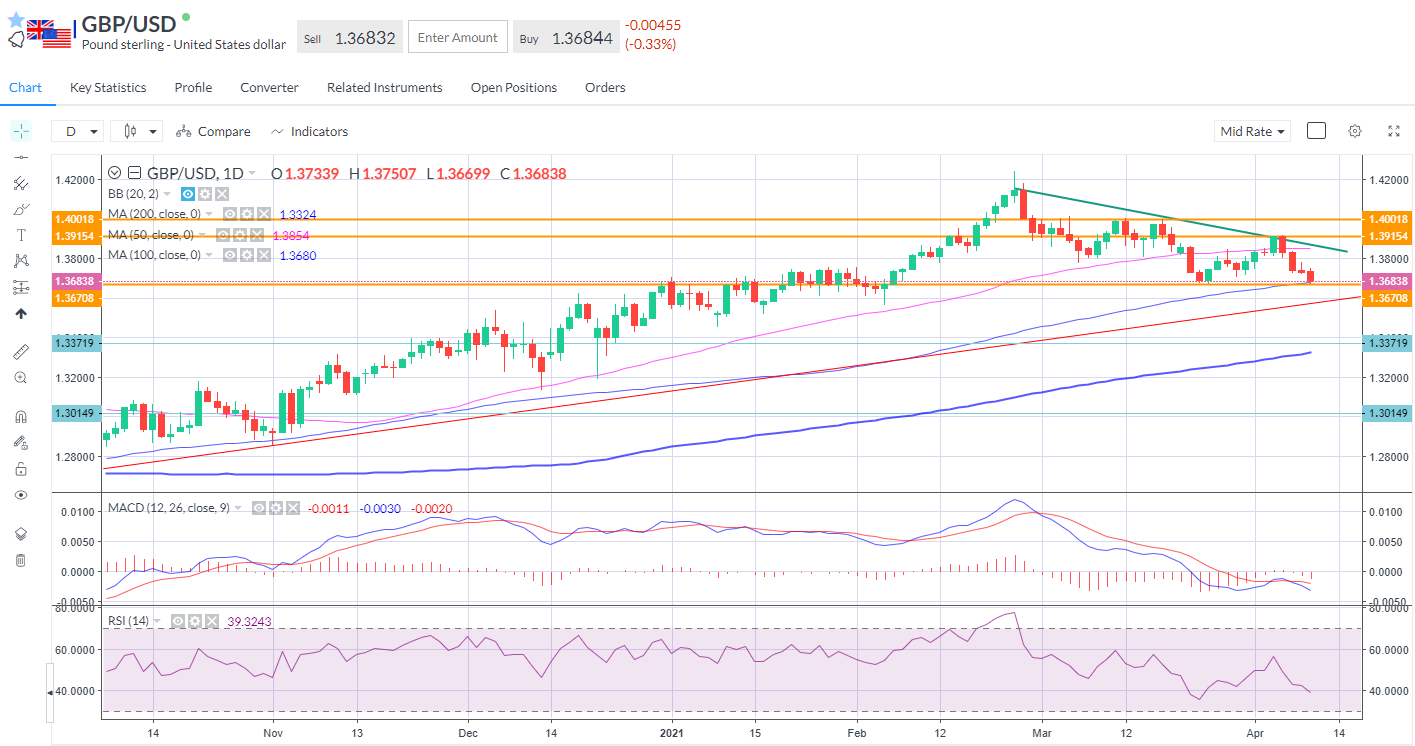European stocks opened a shade lower on Friday morning as the major bourses look to close out a largely positive holiday-shortened trading week. The FTSE 100 is up around 3% this week after hitting its strongest since February 2020. It’s been a very good week for UK equities as the blue chips finally broke out to post-pandemic highs and the mid-caps on the FTSE 250 hit an all-time high. Lots of reasons behind the positive moves in UK equities this year: a vaccine rollout of immense success and an expected economic bounce back as activity returns towards normal both here in Britain and globally are supportive. But you could also look to the relative underperformance of UK equities as a factor – from a low bar they are finally catching up, you could say. Whilst the US and European equity benchmarks have roared to all-time highs since the pandemic, the FTSE 100, in particular, has struggled. The recovery in the pound has not helped - weakness this month has helped the FTSE - but it remains the case that the UK’s largest companies are trading at a discount to peers. This has been the case for years, but there is reason to think Britain can close the gap. The FTSE 100 is already up 7% this year to date, against gains of around 9% for the S&P 500 and almost 11% for the DAX.
It was a positive session on Wall Street again. The S&P 500 rose over 0.4% to set a record closing high for the second day in a row. The Nasdaq added more than 1% as Amazon (NASDAQ:AMZN), Netflix (NASDAQ:NFLX), Microsoft (NASDAQ:MSFT) and Alphabet (NASDAQ:GOOGL) all rallied. Tesla (NASDAQ:TSLA) rose almost 2% as Morgan Stanley (NYSE:MS) said the company is set to benefit from Joe Biden’s plans to spend massively on developing America’s electric vehicle ecosystem. Investors, they said, “face greater risk not owning Tesla shares in their portfolio than owning Tesla shares in their portfolio”. The Dow inched up thanks chiefly to Apple’s almost 2% gain. Overnight shares in Asia were mostly lower. Tencent-backed Linklogis jumped about 9% on their debut on the Hong Kong market.
China’s factory gate prices – an important leading indicator for inflation – rose ahead of analyst expectations and at the fastest clip since July 2018 in March. China’s producer price index (PPI) rose 4.4% last month, well up from the 1.7% in Feb. It’s a clear sign of robust demand for goods made in China, as well as indicative of rising costs for raw materials. Meanwhile new bank loans in China are seen rising sharply in March, according to a Reuters poll.
German industrial production fell 1.6% in February, a surprisingly poor showing in a sector of the economy that has done well despite pandemic-related restrictions. It now means an unlikely jump in activity in March is required to prevent Europe’s economic engine suffering a contraction in the first quarter. Another report showed a 0.9% rise in exports during February as robust demand from outside Germany and Europe. France’s industrial output declined by 4.7% in February compared with January – lockdown bites.
Sterling fell out of bed this morning, with GBPUSD dropping under the 100-day simple moving average at 1.3680 and the March lows at 1.3670 to hit its lowest since the start of February. Since hitting an intra-day high above 1.42 at the end of February, cable has been a one-way street since, sliding 4% over the 7 weeks. EURGBP also rallied to its best since the end of Feb and looked at the 0.87 level. After a bad run through April the dollar is bouncing this morning after slipping under its 200-day moving average yesterday.

